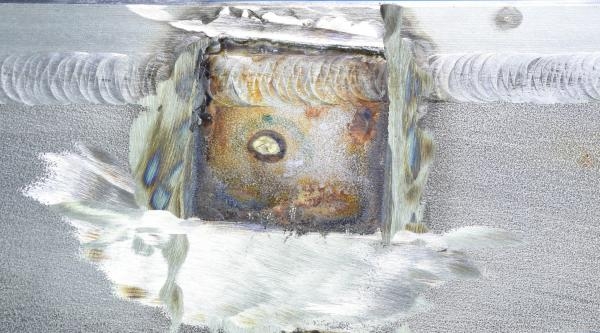Simply mending a machine is not enough. When a problem occurs on its equipment, ECM Technologies tries to pinpoint the root cause of this problem. One such example is a leak in the lower chamber of a vacuum furnace used for high temperature sintering. The manufacturer carried out a temporary repair so that its customer could continue to use the furnace. Internal tests showed no anomalies, with operating parameters within acceptable limits. “The leak was clearly caused by corrosion,” explained Arthur Pélissier, Managing Director Asia at ECM Technologies. However, we wanted to determine the root cause and have a fully independent analysis performed. Accordingly, we contacted Cetim-Matcor.” As the cracks had been sealed during the repair, the priority was to preserve the critical evidence required for the analysis, when removing the damaged areas of the vessel. “The examinations revealed a chloride stress corrosion cracking mechanism at and around the welded regions,” reported Leonard Tok, from Cetim-Matcor.
An analysis and solutions
To avoid any recurrence, Cetim’s specialists have suggested two preventive measures. The first is the more accurate and regular monitoring of the water quality during operation so that any abnormal increase in chloride levels can be quickly detected. The second relates to the design of the furnace. As cracks have appeared in the cooling channel, sealing the space between the flange and the inner wall by welding will effectively reduce the stress concentration process. “However, care must be taken to ensure that the welding does not create additional stresses that could affect other parts of the chamber,” pointed out Léonard Tok.
“During our discussions, we were impressed by the technological and scientific expertise of the Cetim-Matcor team. Their flexibility was also greatly appreciated. The objective approach of their report served as a guarantee for our customer,” enthused Arthur Pélissier.


